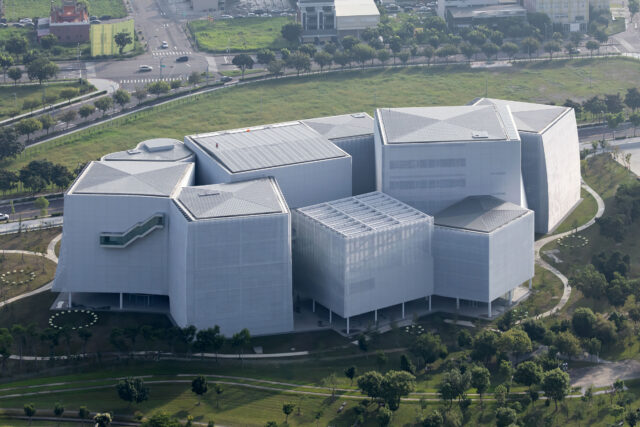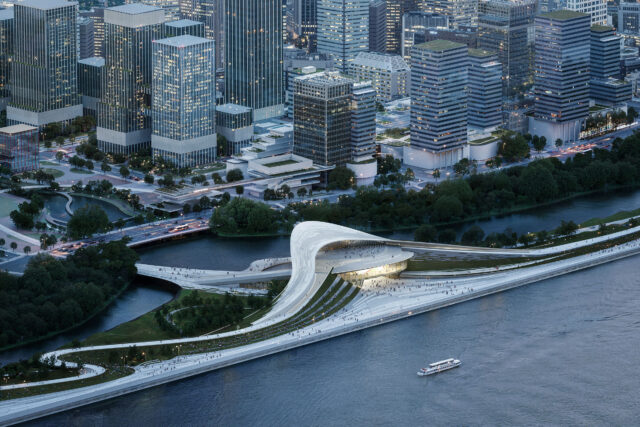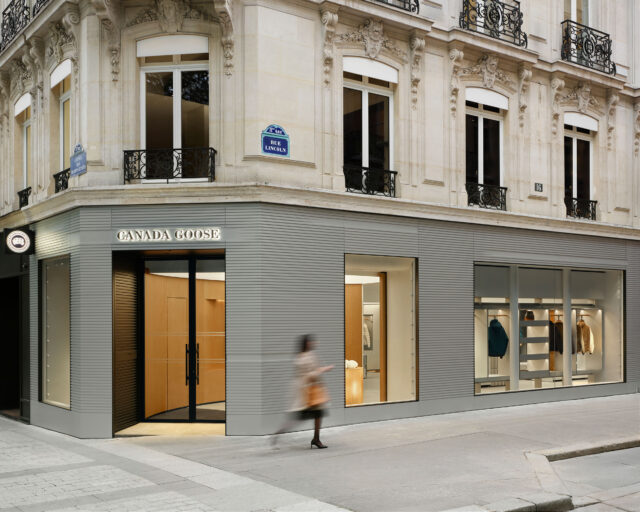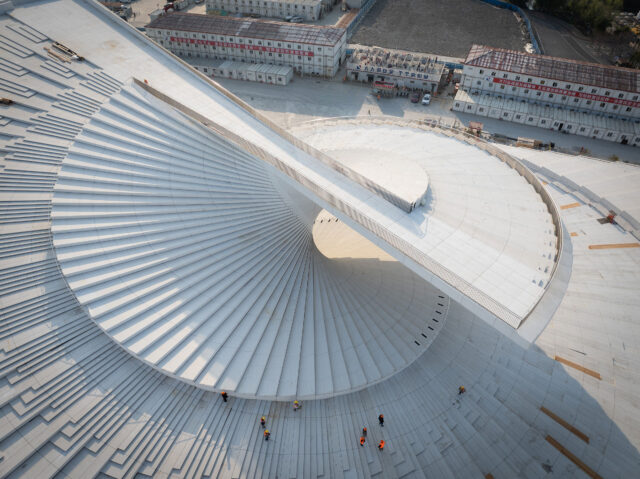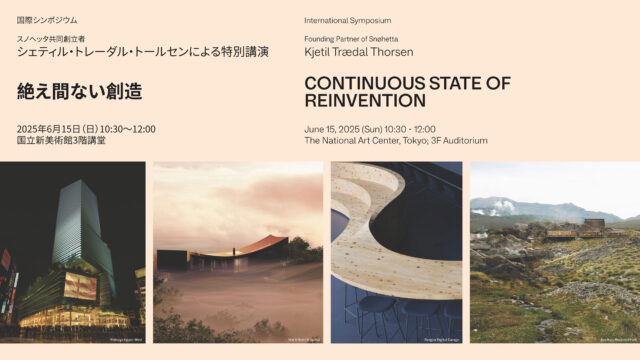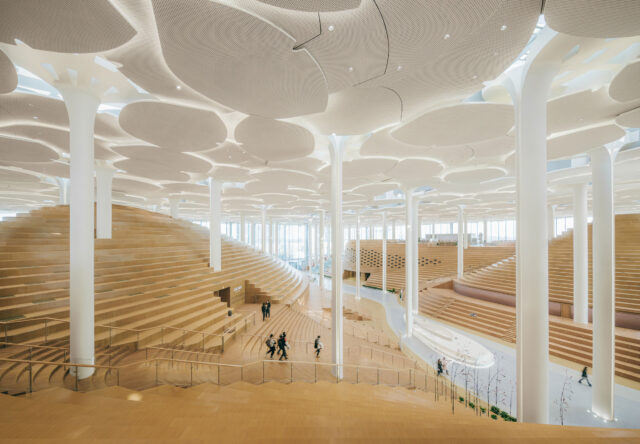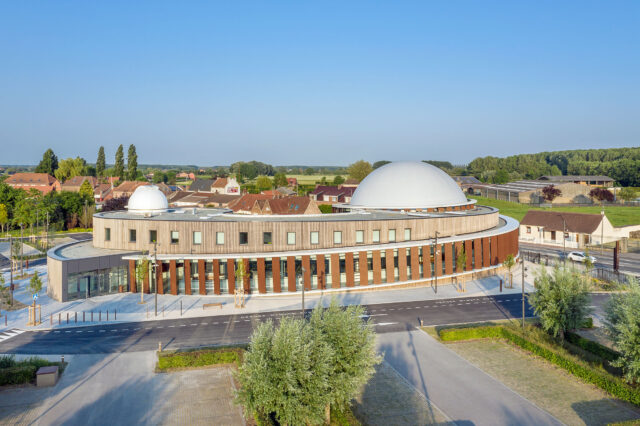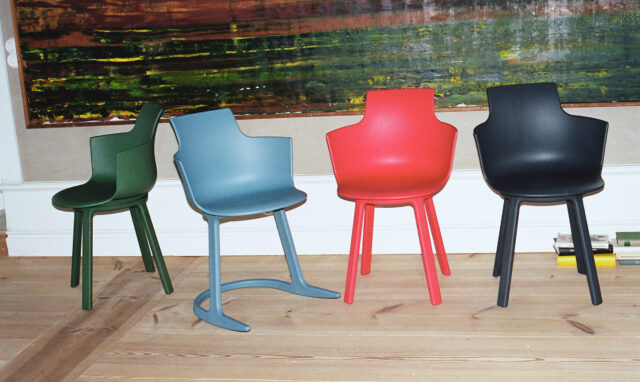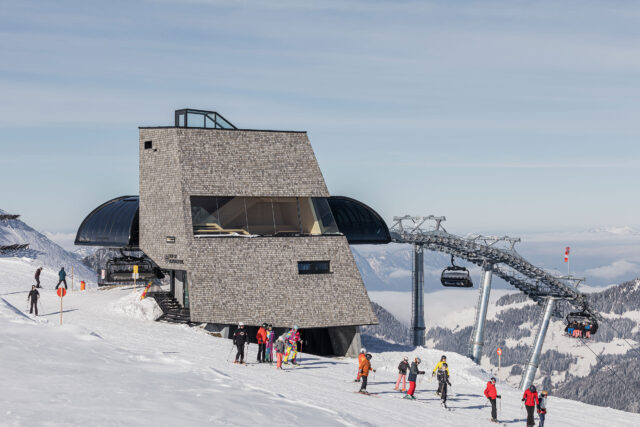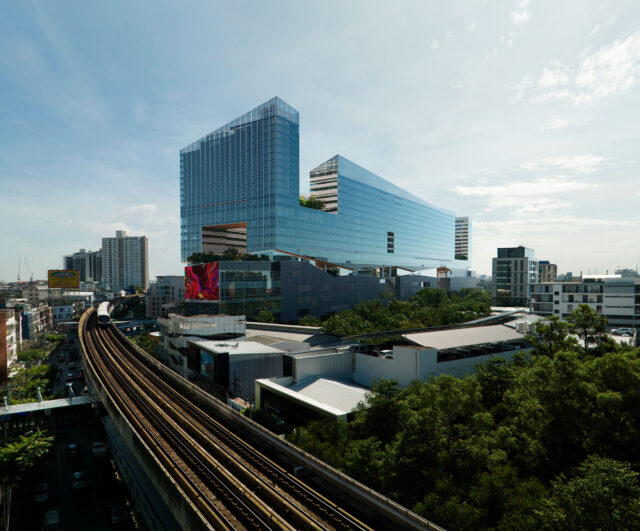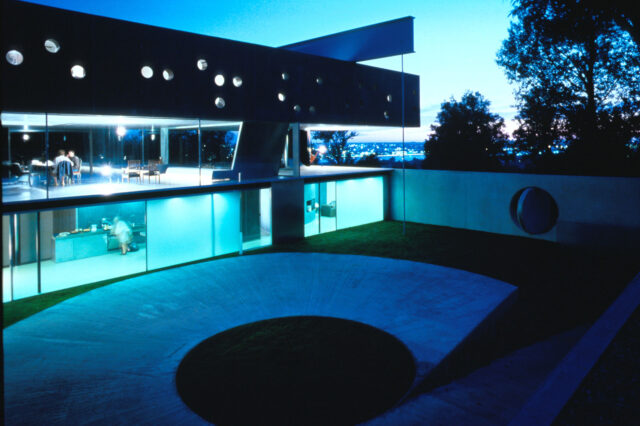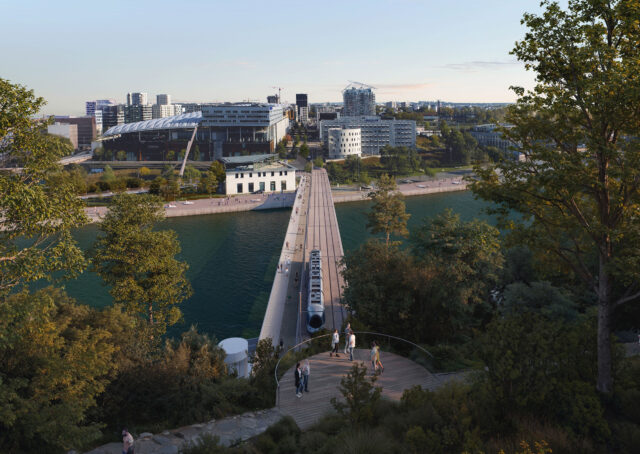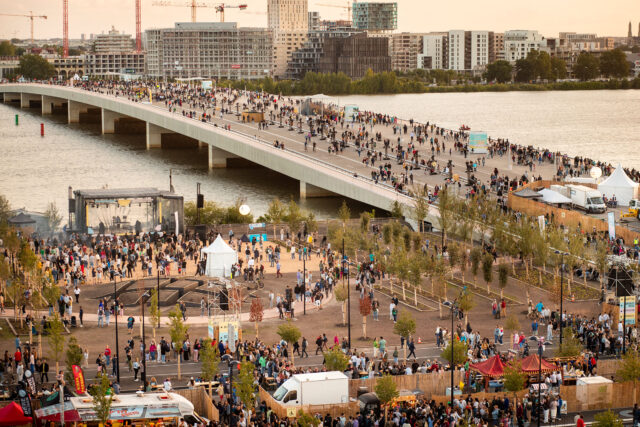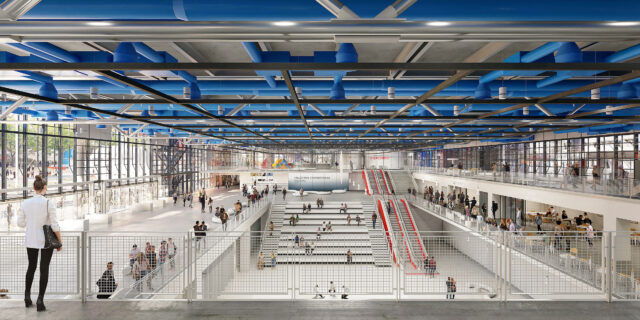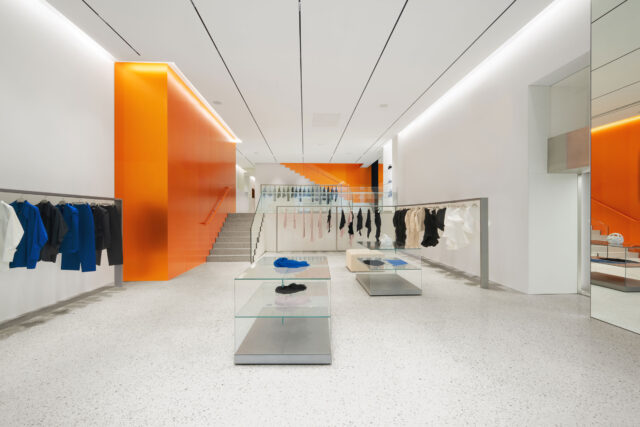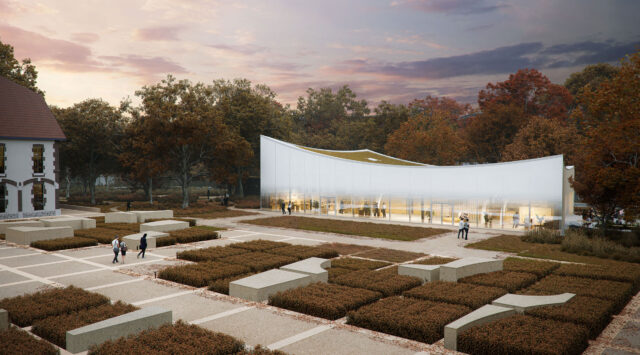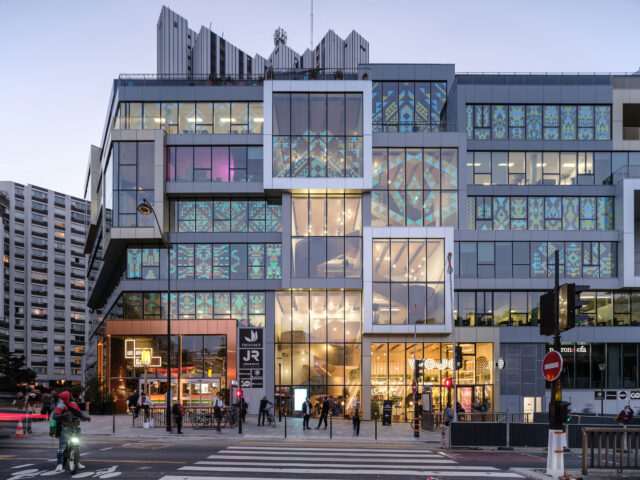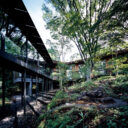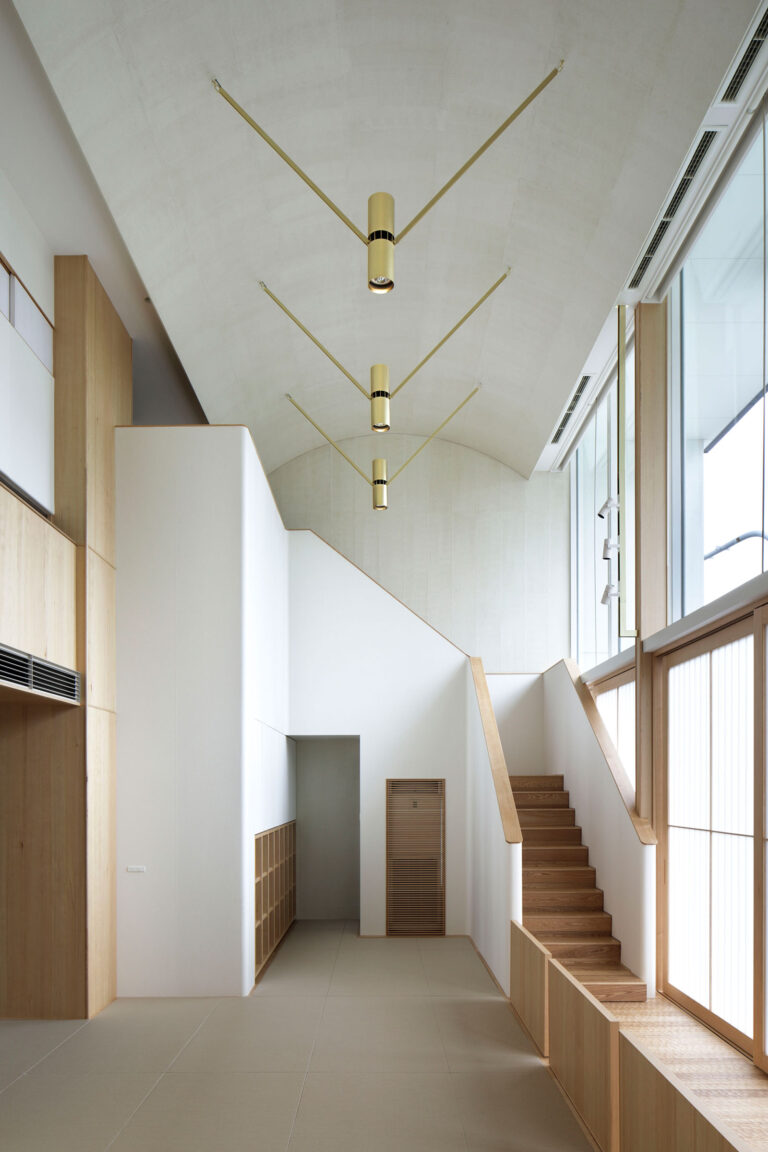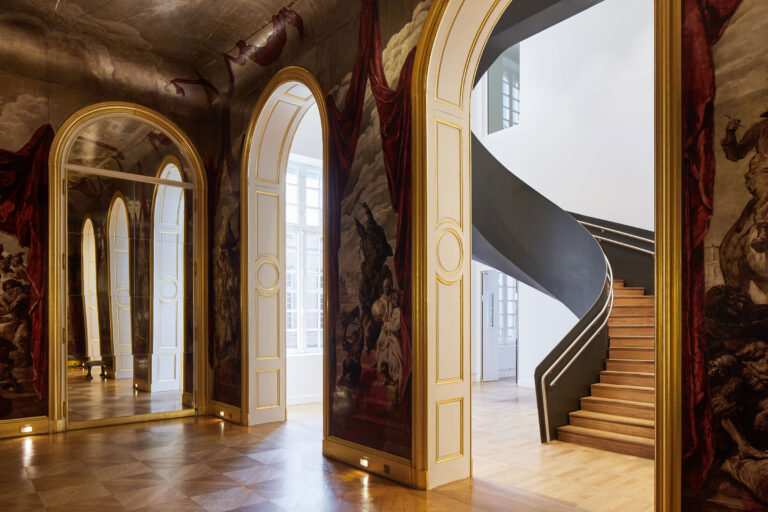
SHARE スノヘッタが新設部分のデザインを手掛け、シャティヨン・アーキテクツが修復と再開発を担当した、パリの「カルナバレ博物館」。17世紀に完成した建築の原形を尊重した上で現代に合わせアップデート



スノヘッタが新設部分のデザインを手掛け、シャティヨン・アーキテクツ(Chatillon Architectes)が修復と再開発を担当した、フランス・パリの「カルナバレ博物館(musée Carnavalet)」です。17世紀に完成した建築の原形を尊重した上で現代に合わせアップデートしています。施設の公式サイトはこちら。
こちらは建築家によるテキストの翻訳です
スノヘッタがパリの歴史あるカルナバレ博物館に新風を吹き込む
2021年5月29日、4年間にわたる大規模な改修工事を経て、カルナヴァレ美術館がリニューアルオープンします。絵画、彫刻、家具、木工品、美術品、写真など、62万5千点にも及ぶ所蔵品が、パリの豊かな歴史を物語っています。スノヘッタは、美術館全体のレイアウト変更に参加し、シャティヨン・アーキテクツ(Chatillon Architectes)と協力して、美術館のオリジナルの特徴を大切にしながら、多くの来館者に対応できる新しい体験を提供しました。
2021年5月28日 – 2016年に、スノヘッタはリードアーキテクトのシャティヨン・アーキテクツ(Chatillon Architectes)とともに、フランスで最も著名な美術館のひとつである歴史的なカルナヴァレ美術館の建築改修を依頼されました。パリ3区、歴史と活気に満ちたマレ地区に位置する3,900㎡のカルナヴァレ美術館は、パリの美術館の中でも最も古いもので、2016年に改修のために閉館するまでは、毎年40万人以上の来館者を迎えていました。
リスペクトを込めたアップデート
カルナヴァレ美術館は、著名な建築家フランソワ・マンサール(François Mansart)が1655年に完成させた「オテル・カルナヴァレ」と、隣接する、建築家ピエール・ビュレット(Pierre Bullet)の図面に基づいて1688年に建てられた「オテル・ル・ペルティエ・ド・サン・ファルジョー」という2つの重要な建物が合体したものです。1800年代半ば以降、カルナヴァレ美術館は、フランスの建築・文化遺産としての重要性から、いわゆる「モニュメント・ヒストリック(フランス歴史的記念物)」に指定されています。
その歴史的な重要性から、美術館の全体的なデザインは、美術館の科学・文化チームやパリ市の幅広い専門家との緊密な協力のもとに進められています。この改修工事では、建物のオリジナルの特徴を慎重に尊重しつつ、現在の基準に適合するように修復し、すべての来館者にとっての博物館の総合的な体験を向上させています。後者は、美術館、中庭、庭園をより直感的に見て回れるようにするだけでなく、子供や障がい者にも適応できるようにすることで達成されています。全展示品の10%は子供の目線に合わせて展示されています。
シャティヨン・アーキテクツが美術館全体の修復と再開発を担当する一方で、スノエッタは受付の新しい家具や現代的な階段のデザインを通じて、空間に新しさを加えています。また、スノヘッタは美術館の案内表示、展示用の看板、パネル、調停装置などのグラフィックデザインを担当し、美術館の見学をスムーズにすることに貢献しています。
新しい記念碑的な階段は、ダークスチールの大胆な有機的形状と、洗練された木材のステップワークでデザインされています。スノヘッタは、プロジェクトの他の部分や、特にアージェンスNC(ナタリー・クリニエール)が制作した新しい常設の空間演出に合わせて、全体的にダークな色調で統一し、展示物のディテールや複雑さを際立たせています。
時代を超えたアプローチ
美術館のデザインに使われている形や素材は、時代を超越しています。このデザインは、持続可能なエネルギーソリューションと、高品質で長持ちする素材で構成されています。階段には パウダーコーティング塗装を施した金属を使用し、仕上げには無垢材を使用することで、耐久性を高め、素材のライフサイクルを長くしています。プラスチックや使い捨ての素材(看板の紙など)は、柔軟なマルチメディア・ソリューションに置き換えられています。
改装された受付エリアは、最適な使用方法を考慮して設計されており、チケットカウンターやクロークは、美術館の収容力と快適性を高めるために作り直されました。さらに、スノヘッタは教育活動に特化した新しいスペースをデザインし、美術館全体に導入しました。これにはワークショップやリサーチエリアが含まれ、一般の方が特定の活動プログラムに参加したり、美術館の豊富なコレクションから得られる素晴らしいリソースにアクセスすることができます。また、シャティヨン・アーキテクツによる新しい展示室もいくつか設けられており、その中にはこれまで一般の人が立ち入ることのできなかった地下室も含まれています。
強化されたシーノグラフィー
アジエンスNC(ナタリー・クリニエール)の展示デザイナーと空間デザイナーは、広い展示スペースと、先史時代から今日までのパリの歴史を物語る工芸品の年代順の展示と文脈の改善により、来館者の体験をさらに向上させました。美術館全体の改修・再開発と並行して、3,800点以上の工芸品が専門家の手によってかつての輝きを取り戻しました。また、このプロジェクトにより、これまで博物館のリザーブに保管されていた工芸品の60%が展示されることになりました。
訪問者の体験が向上したことで、カルナヴァレ美術館は、物理的にも知的にも誰もがアクセスできるようになり、パリ市民やフランス人、そして海外からの観光客にとって、さらに魅力的な場所になることでしょう。展示品に関する情報は複数の言語に翻訳され、美術や歴史に精通した愛好家から、美術館の豊かな世界を知り始めたばかりの好奇心旺盛な子供たちまで、あらゆるタイプの来館者に対応できるようになりました。
以下の写真はクリックで拡大します

































以下、建築家によるテキストです。
Snøhetta Adds a Touch of Novelty to the Historic musée Carnavalet in Paris
After an extensive four-year renovation period, the musée Carnavalet, reopens to the public on Saturday 29 May 2021. The renovated museum offers an enhanced visitor’s experience that provides a unique travel through time to discover the rich history of the city of Paris – a story told through 625,000 artefacts, including paintings, sculptures, furniture, woodwork, art pieces and photography. Snøhetta has participated in the overall reorganization of the layout of the museum, working hand in hand with Chatillon Architectes to offer a new visitor experience that can accommodate for a large number of visitors all while carefully respecting the original features of the museum.
Friday, May 28, 2021 — In 2016, Snøhetta was commissioned along lead architect Chatillon Architectes to undertake the architectural renovation of one of the most prominent museums in France: the historic musée Carnavalet. Situated in the 3rd arrondissement in Paris, in the historic and vibrant district of the Marais, the 3,900 m2 musée Carnavalet is the oldest of all Parisian museums, and before closing for renovation in 2016, the museum welcomed more than 400,000 visitors each year.
A Respectful Update
The musée Carnavalet is the result of the merging of two significant buildings, the Hôtel Carnavalet, completed in 1655 by the famous architect François Mansart, and the adjacent Hôtel Le Peletier de Saint-Fargeau, built in 1688 based on drawings from architect Pierre Bullet. Since the mid-1800’s, the musée Carnavalet has been listed as a so-called “Monument Historique” because of its importance to France’s architectural and cultural heritage.
Because of its significant historic importance, the overall design of the museum is developed in close collaboration with the museum’s scientific and cultural teams, as well as a wide range of experts on the city of Paris. The renovation carefully respects the original features of the building while restoring it to comply with current standards and enhancing the overall museum experience for all visitors. The latter is attained through the establishment of a more intuitive journey through the museum, the courtyards, and gardens, but also by making the building more adapted to children and people with disabilities. 10% of all artefacts are displayed at children’s eye-level.
While Chatillon Architectes have overseen the overall museum restauration and redevelopment, Snøhetta has added a touch of novelty to the space through the design of the new furniture pieces in the reception area and contemporary staircases. Snøhetta has also been in charge of the graphic design of the museum’s wayfinding, exhibition sings, panels and mediation equipment that will help facilitate the overall museum visit.
The new and monumental staircases are designed as bold organic shapes in dark steel with a refined timber step work. Throughout, Snøhetta has chosen to provide a dark consistent palette in coordination with the rest of the project and in particular with the new permanent scenography created by Agence NC (Nathalie Crinière) highlighting the detail and complexity of the displayed artefacts.
A Timeless Approach
The shapes and materials used in our design for the museum are timeless. The design comprises sustainable energy solutions, as well as high quality and long-lasting materials. The choice of powder coated metal for the staircases and solid wood finishes provides a strong resistance to use and longer material lifecycle. Plastics and disposable materials (such as paper for signs) have been replaced by flexible multimedia solutions.
The renovated reception area is designed for optimal use, and the ticket counters and cloakrooms have been reworked to increase the museum’s capacity and comfort. Moreover, Snøhetta has designed new spaces dedicated to teaching activities that have also been introduced throughout the museum. This includes workshops and a research area where the public can join specific activity programs and access the extraordinary resources from the museum’s rich collection. Several new exhibition rooms have been created by Chatillon Architectes, some of which are located in cellars that where up until now unaccessible to the public.
An Enhanced Scenography
The exhibition designers and scenographers at Agence NC (Nathalie Crinière) have enhanced the visitor experience even further though generous exhibition spaces and an improved chronological display and contextualization of artefacts that come together to tell the story of Paris – from prehistoric times until to today. In parallel with the overall museum restauration and redevelopment, more than 3,800 artefacts have also been restored to their former glory by experts. The project has also allowed for the display of 60% of the artefacts that were previously stored in the museum’s reserves.
The enhanced visitor experience will ensure that the musée Carnavalet becomes an even more attractive venue for Parisians, the French and international tourists by making it physically and intellectually accessible for all. Information about the exhibited artifacts have been translated into several languages and are now universally accessible adapted to all types of museum-goers: from savvy art and history connoisseurs to curious young children that have just started discovering the museum’s rich universe.

